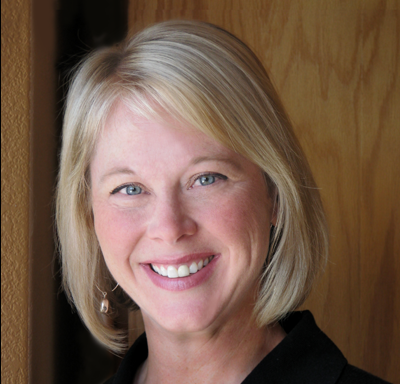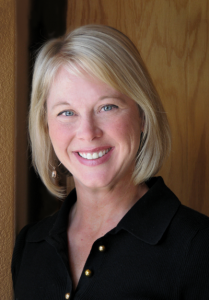Q. As one of the inspirational speakers at the upcoming Content Marketing Conference in Las Vegas, you’re speaking on the Seventh Era of Marketing. What were the other six?
A. There are five formally identified eras of marketing and a sixth that’s generally accepted.
You’d hardly recognize marketing during the Trade Era (1850s-1900s), but that’s when companies began selling the excess of what they produced. The focus was on where companies could make their products available, the place where customers could find them.
By the time the Production Era (1900s-1920s) rolled around, Americans were getting used to an urban lifestyle. This is when the idea of advertising really exploded and companies focused on their products.
The Sales Era (1920s-1940s) was about distributing products through new places, and key to this was the sales person. Companies focused on the price and features of the products they sold.
In the Marketing Department Era (1940s-1960s) you saw the ‘Mad Men’ era. Marketing and advertising’s creativity really blossomed and it was the most exciting part of the business. Computers came into play and brands began segmenting their audience.
The Marketing Company Era (1960s-1990s) brought customers asking how they could do more than just sell a product. It was about the brand of the company, not just the products themselves. Apple’s ‘1984’ Super Bowl was a prime example.
The Relationship Era (1990s-2015) is the period that Don Peppers and Martha Rogers’ 1993 book The One to One Future help usher in and led to building individual relationships with customers. That was followed by social media and having conversations with customers, rather than talking at customers.
Q. Your discussion focuses on switching from product-centered content to the customer-centric experience. How tough is it typically for the traditional marketer to make that switch?
A. I see marketers having a very hard time making the switch. The default mode – and comfort zone – is to talk about what we sell. But customers don’t care about what you sell until they believe you understand their problem. That different mindset can be hard for marketers to get their head around.
For marketers who understand the difference, many face how to execute the shift. It takes time to instill it across the organization, but there are things that every marketer can to start. The challenge comes with fortitude in sticking with focusing on customers instead of talking about your company. It’s hard, it’s not how marketers traditionally think, but it’s necessary in order to engage with customers who have a short attention span in a hyper-connected environment.
Q. What are some of the stumbling blocks that may stand in the traditional marketers’ way? Do some simply refuse to budge?
A. The biggest stumbling blocks are legacy thinking and fear. Marketers – and the companies they work for – want a different outcome but they’re locked in with legacy thinking about marketing’s role and how it should perform. It’s a crutch. Sometimes the unwillingness to change comes from fear. “If I do something different, will I get fired?” Playing it safe leads to uninspired work. And that’s no way to solve customer problems.
Q. Have you had any rebels in the audience of any of the marketing conferences at which you spoke? If you did, how would you convince them the customer-centric way was the way to go?
A. No, but that’s probably because the people who think that marketing is doing just fine aren’t at conferences wanting to learn.
Research shows that buyers now buy differently. They do their own research, get opinions and do their homework about how to solve their problem before they want to talk to a sales person. Sales people know this, they’re asked different questions and their role in the buying process has changed, mostly they come into play when customers are farther along in the decision process.
Marketing needs to co-create solutions for customers with sales and as well as others within their organization. Companies that continue to push products rather than focusing on solving customer problems will see that mistake hit their bottom line.
Q. Can you give us an example or two of a company that is rocking the customer-centric experience? Is there a specific campaign or two that comes to mind?
A. I love what Emerson is doing with their partnership with Internet and science celebrity Hank Green to inspire and empower the next generation of engineers and scientists through its #ILoveSTEM Campaign. They partnered with a self-proclaimed science nerd to talk about science, technology, engineering and math (STEM) because they both have the same goals – to get more people interested in science and engineering so they can solve tough problems.
Q. We’re awed by your credentials as author, content marketing instructor and VP of Thought Leadership for the Business Marketing Association. Which role suits you best, and why? Which is the most fun, and why? Which is the most challenging, and why?
A. There’s a common thread in all of these that suits me – being a student. What I love about all of these roles is that I can feed my curiosity and talk to amazing people who are incredibly smart.
I truly feel like I am the luckiest person in the world to do what I do. People read my work, take my courses and listen to my opinions and then they turn around and share their experiences with me.
The most fun is to be able to feed my curiosity about marketing, dig into how people solve problems, and understand the difference it’s making in how businesses perform. The biggest challenge is always making sure that I deserve to have their trust in the work that I do.
Q. Without naming names (unless you want to), can you outline how a brand story or attempt at customer engagement went really, really wrong?
A. Yes, I’ve seen brand stories go really wrong and it’s usually a similar reason – the story isn’t authentic and employees, including marketers, don’t believe it in. Either they don’t sustain telling the story or it’s told so poorly that customers can see right through it. Customers are smart. They know in a heartbeat when marketing is giving lip service because they have inconsistent experiences, and usually poor ones, at every touch point.
Q. Your bio also says you “instill creative confidence” in companies. How do you go about doing that? Are most people creative at their core and simply need a little nudging to unleash their capabilities? Please explain.
A. Humans are creative by nature. I look at my kids, who are 8, 10 and 12. They are amazingly creative because (so far) no one’s convinced them they shouldn’t be. As we grow up we’re taught to push that creativity aside and get “real” about the work that we do. Kids don’t have a sense of a right or wrong way to solve a problem.
They just want to try things and see what happens. Creative confidence is the frame of mind that messing up and failing miserably is part of the process. Instilling it means giving people ways to build that confidence in a safe environment.
My kids love to cook but I didn’t start them out when they were four years old insisting that they whip up a formal dinner party. I taught them to scramble an egg. They gained confidence with that and they moved on. My 12-year old can now make a killer tres leches cake but believe me, we threw out a lot of tries along the way.
You can’t expect marketers to take on a completely new way of thinking or acting and then criticize them when they stumble. It’s little steps and then reflecting on what worked well, what you can do differently and what you need to throw out.
Failing can be fun. Believe me, I know because I’ve done it a lot. But I wouldn’t trade what I’ve learned along the way for anything in the world.
Q. What’s the key to transforming a seemingly rather bland brand story into an exciting tale readers will devour? Is that actually possible in all cases?
A. “Exciting” is relative. What’s exciting to a Netflix audience is different to a climate engineer. But I believe that every brand has the opportunity to keep their customers – and all of their audiences – on the edge of their seat. Every company should aspire to keep audiences wanting more. It’s hard, and it takes a lot of commitment and a willingness to try things that scare you. But that’s what customers desperately want – inspired work. We all have the potential to deliver it. However, not everyone has the grit to stick with it.
Q. We’re guessing the customer-centric experience has to be sincere to be effective. Is that true? How can companies prove they are sincere in wanting to align with their customers and not just pulling a fast one to sell services or products?
A. You can’t fake sincerity, and I’ll go back to Emerson for an example. Senior Vice President Charlie Peters is one of their most senior executives and he has a blog called The Extra Mile with Charlie, much of which he writes himself. They’ve taken an extremely senior executive and turned him into a communications vehicle. He’s very personal. Charlie’s an expert on business which he talks about, but he’s also a runner and an expert on that too. He shares letters to his son in Afghanistan and life lessons from a different decade. It’s interesting and poignant, not just the normal business topics. You can’t fake Charlie’s level of authenticity.
Q. Anything else you want our readers to know?
A. What I want every reader to know is that ability to create remarkable experiences for customers can absolutely start with them and the work that they do – and it doesn’t matter what their role in the company is or how long they’ve been there. Everyone. Creates. Experiences. The question is, what is the quality of experiences you’re creating through every interaction that you have with other people? How are your interactions with people influencing the experiences that your company creates?


